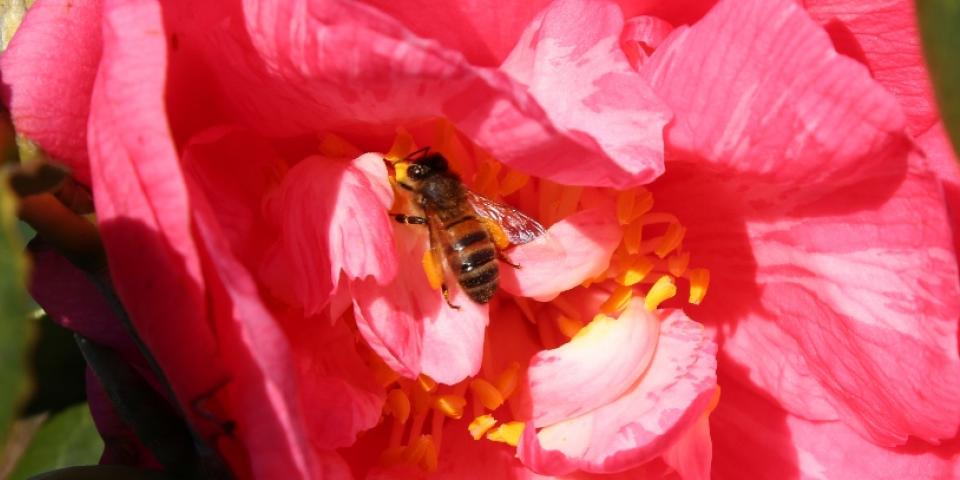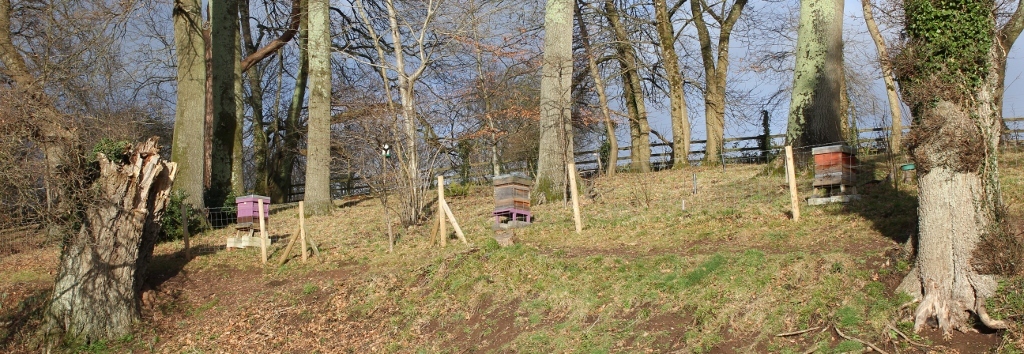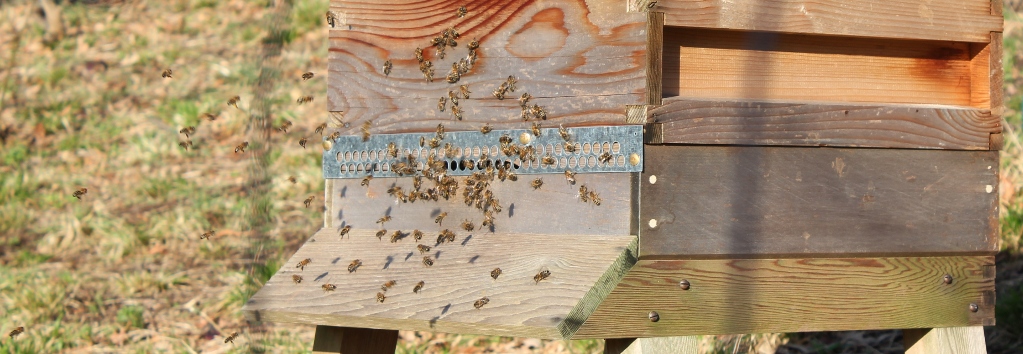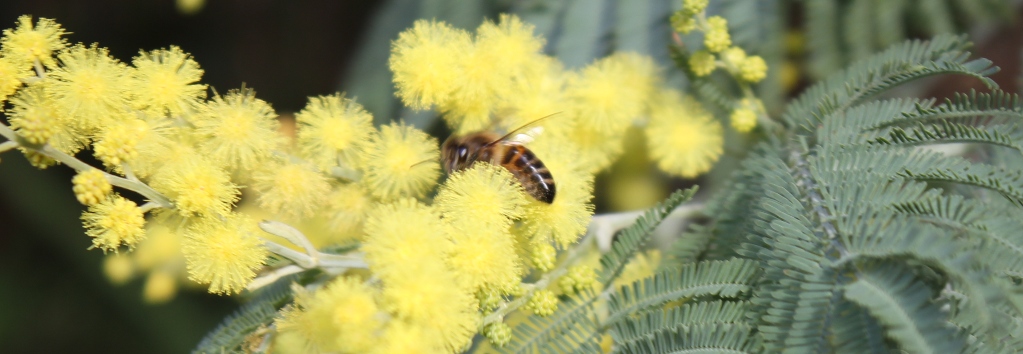- Posted By: beekeeper
- Comments: 0

Once a week during the winter months I like to take a walk to the apiary to check all is well. Having prepared my three colonies for winter, even though beekeepers are no longer opening up their hives, we still need to check that the entrances are clear and no damage to any of the hives. We've had our fair share of rain and strong winds lately, so it's a pleasure to stroll out this morning with the sun shining to check on the bees.

Apiary site sitting in sunshine.
One thing a beekeeper becomes more aware of is what sources of nectar and pollen are around throughout the year. My walk takes me along an old railway track, now a public footpath, surrounded by woodland. Looking around, I could see hazel trees festooned with their draping yellow catkins. Although their pollen is airborne and can be blown by the wind for miles, it is a valuable source of early pollen for honey bees and other insects.
As I walked across the field to the apiary, I could see all the hives sitting in glorious sunshine - a beautiful sight! Would the girls be out flying? As I got closer, there was certainly a lot of activity going on at the entrances, especially one of them. Perhaps they were making the most of the weather and venturing out on cleansing flights having been cooped up inside for days due to the amount of rain we've had lately.

Manston entrance with foragers returning with pollen.
After checking the other two hives, Moormead and Overbrook, back I went to Manston to watch them. These weren't all cleansing flights, but workers going out to bring back pollen. Sitting and watching is such a pleasure. You learn what direction the bees are flying, what colour pollen they are bringing back and from that you can work out where their source of pollen (or nectar) is coming from.
Today, the direction of flight was back towards Budleigh Salterton and the colour of pollen was mainly yellow with some orange pollen also being brought back. On their return the foragers pass the pollen onto the workers inside the hive before heading back out again. While the temperature is warm enough, they'll carry on foraging making the most of the break in weather as it's back to rain later in the week.

Mimosa (Acacia dealbata) with its yellow scented flowers.
Walking home, I pass honey bees gathering pollen on a vibrant pink camelia plant in full flower while further along there's a tall mimosa tree humming with the sound of honey bees and other insects. The first day of spring isn't officially here until March, but the colour of spring is certainly beginning to blossom and a welcome sight.
As I write, I'm listening to local radio back at home and Lou Armstrong is singing "What a wonderful world". I love just sitting and watching my honey bees and can spend hours lost in their busy bee world.
The image used has been published under the terms of a Creative Commons License and is attributed to Jenifer.
